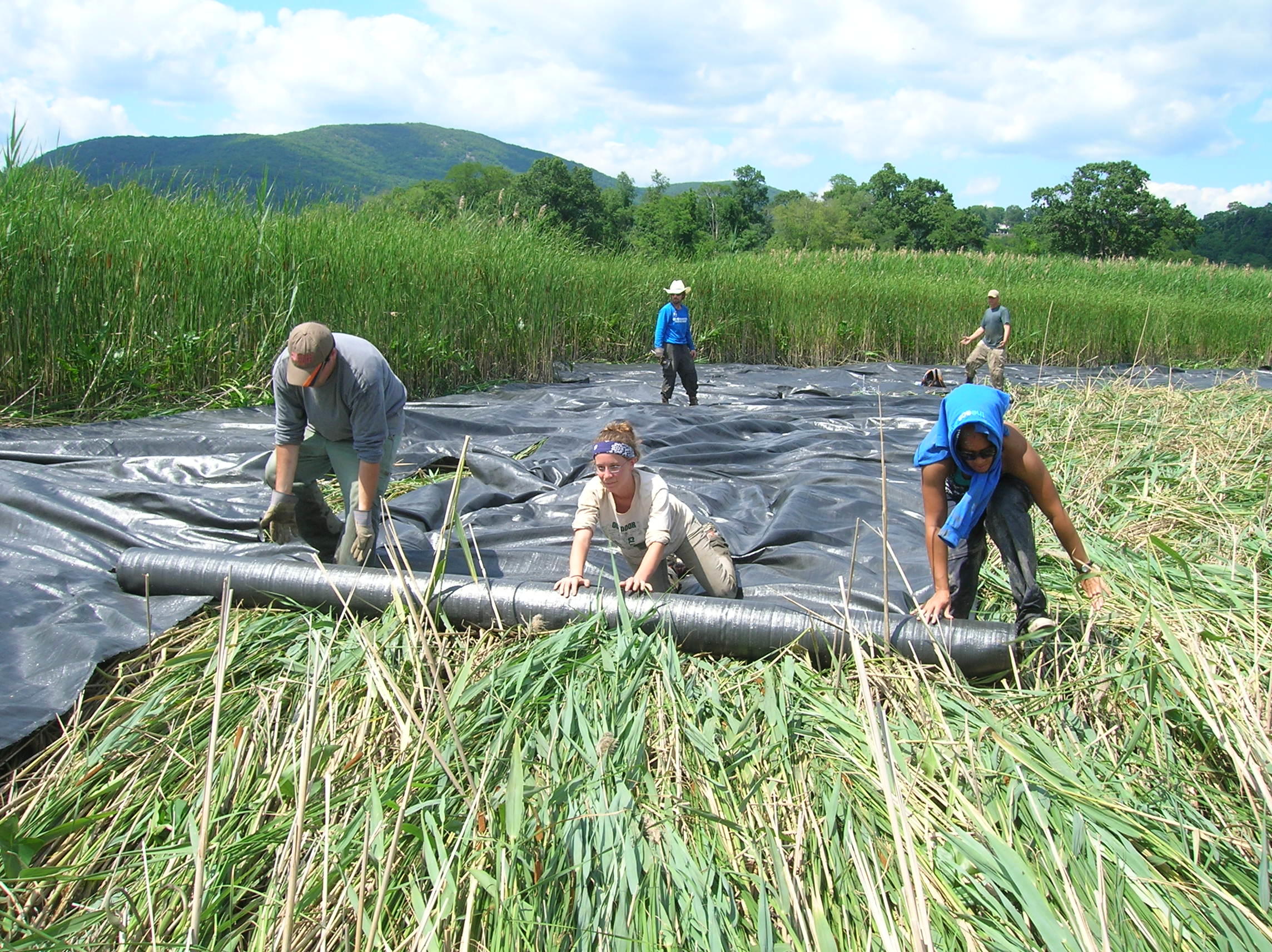A large part of our conservation work is devoted to the control and management of the invasive common reed (Phragmites australis). Reed is an aggressively growing plant in parts of the U.S., including the northeast (The Nature Conservancy, 1986). Various factors contribute to its spread including its ability to rapidly reproduce (Haslam 1970). External influences such as human disturbances promote this species’ growth (Roman et al., 1984). Reed is currently expanding in several Hudson River tidal wetlands. When reed spreads it can create monocultures, reducing biodiversity through rapid habitat change. Studies (Kiviat, 2002) indicate that in the Hudson Valley there is less bird breeding and foraging activity in reed stands when compared to other wetland vegetation.
Reed in Constitution Marsh is currently being managed to ensure it continues to serve as quality habitat for marsh birds and other wildlife. Control methods include labor intensive flattening and covering reed patches with a black geotextile material. Heat from the sun raises the temperature of the soil and eventually kills the undesirable vegetation. After the root system of the invasive reed is no longer viable, the geotextile is removed and native vegetation recolonizes the area.
References:
Haslam, S.M. 1970. The performance of Common reed communis Trin. in relation to water supply. Ann. Bot. N.S. 34:867-877
Kiviat, E. 2002. Bird Surveys at Phragmites australis Stands in Tivoli North Bay. Hudsonia Ltd., Annandale, New York.
The Nature Conservancy. 1986. Element Stewardship Abstract for Phragmites australis. Arlington, Virginia.
Roman, C.T., W.A. Niering and R.S. Warren. 1984. Salt marsh vegetation change in response to tidal restriction. Environmental Management. 8:141-150.
How you can help, right now
Protect Birds and Nature
Help Constitution Marsh Audubon Center & Sanctuary protect birds and nature. Your donation provides the foundation for this work.
Take Flight with Us
Sign-up today to receive Audubon New York's monthly e-newsletter and important action alerts.





